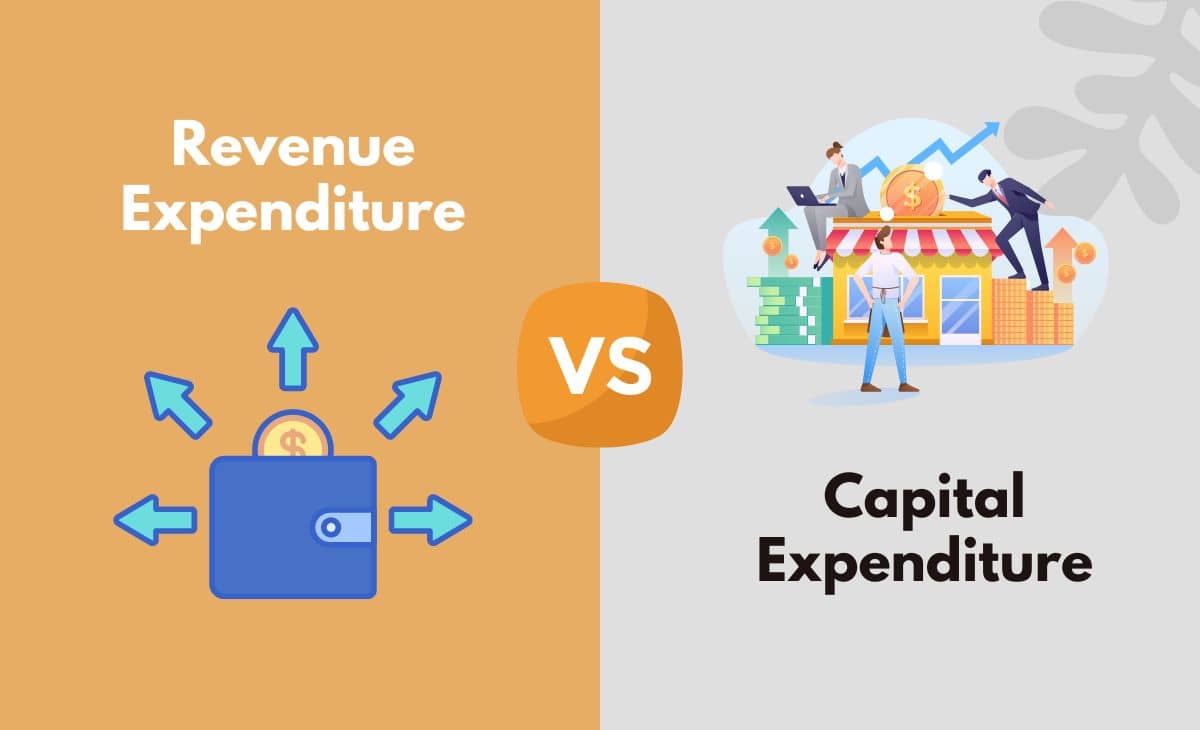
The purpose of a Capital Expenditure is to acquire Fixed Assets such as buildings, vehicles or machinery that will generate revenue in the future. Depreciation is considered to be a revenue expenditure because it does not result in the acquisition of another asset. Instead, Depreciation simply reduces the value of the existing fixed asset over its useful life. Capital Expenditures are expensed when they are incurred whereas Revenue Expenditures are expensed when they are used or consumed. Revenue expenditures are current expenses and include ordinary repairs, maintenance, fuel, and other items required to keep assets in normal working condition.

Cash Flow Statement
The amount of each period’s depreciation expense is also credited to the contra-asset account Accumulated Depreciation. Depending on the type and price of machinery in question, the cost of buying those machines would be either revenue or capital expenditures. Long-term-use machines, or machines that are much more expensive, would come under the capital bracket; anything else would settle as revenue expenditures. Revenue expenditures or operating expenses are recorded on the income statement. These expenses are subtracted from the revenue that a company generates from sales to eventually arrive at the net income or profit for the period.
The difference between capital expenditures and revenue expenditures
Capital expenditures are less predictable than operating expenses that recur consistently from year to year. A company that buys expensive new equipment would account for that investment as a capital expenditure. It would therefore depreciate the cost of the equipment throughout its useful life. Capital expenditures (CapEx) are funds used by a company to acquire, upgrade, and maintain physical assets such as property, plants, buildings, technology, or equipment. CapEx is often used to undertake new projects or investments by a company.
Capital Expenditures FAQs
Operating expenses can be fully deducted from the company’s taxes in the same year in which the expenses occur, unlike capital expenditures. It’s any type of expense that a company capitalizes or shows on its balance sheet as an investment rather than on its income statement as an expenditure. Capitalizing an asset requires that the company spread the cost of the expenditure over the useful life of the asset. The purchases or cash outflows for capital expenditures are shown in the investing section of the cash flow statement (CFS).
It is based on the concept of ‘expense recognition’ and expenses when it occurs. These are, for instance, buying equipment or machinery, purchasing structures or even mechanical transports. Playing annual rent at ₹120,000, the company uses ten thousand US dollars for office and factory rent monthly.
Capital Expenditure Accounting Treatment
- It is not guaranteed that a company will achieve the expected results from its capital expenditures.
- Assets that are capitalized can be accounted for over their useful lifetime and depreciated.
- This makes it difficult to estimate the discount rate and establish equivalence.
- CapEx is the investments that a company makes to grow or maintain its business operations.
- For example, the full benefits of a new machine may not be realized for several years after it is purchased.
Incorrectly recording a revenue expenditure as a capital expenditure has the effect of overstating assets. Someone on our team will connect you with a financial professional in our network holding the correct designation and expertise. This problem is further complicated by the fact that the same item can sometimes be considered a capital expenditure and at other times a revenue expenditure. Clearly, the purchase of a delivery truck is a capital expenditure, whereas an engine tune-up is a revenue expenditure. To achieve this, companies are forced to juggle their total revenue expenditure and their capital expenditure properly. Research may lead to overemphasis on the importance of one to the extent of underemphasising the other.
Expenditure on fixed assets may be classified into Capital Expenditure and Revenue Expenditure. The distinction between the nature of capital and revenue expenditure is important as only capital expenditure is included in the cost of fixed asset. A receipt related to fixed assets constitutes a capital receipt, while a receipt tied to current assets or circulating capital is considered a revenue receipt.
However, the decision to start a project involving much capital expenditure must be carefully analyzed as it will have a significant impact on the financial position and cash flow of a company. Based on this result, the company may choose to either increase or decrease the amount they spend on capital expenditures. A high ratio reveals that a company has a lesser need to utilize debt or equity funding since it has enough cash to cover possible capital expenditures.
By following the best practices mentioned above, businesses can ensure that their capital resources are used efficiently and effectively. A bottom-up approach ensures that all relevant departments have a voice in the budgeting process, which increases the chances of a company’s capital resources being used efficiently. automate 1099 form Department heads are well aware of the needs of their respective departments. Thus, they should be given the opportunity to provide input on capital expenditure budgeting. This is why it is very important for companies to carefully consider all options before making a capital expenditure decision.
